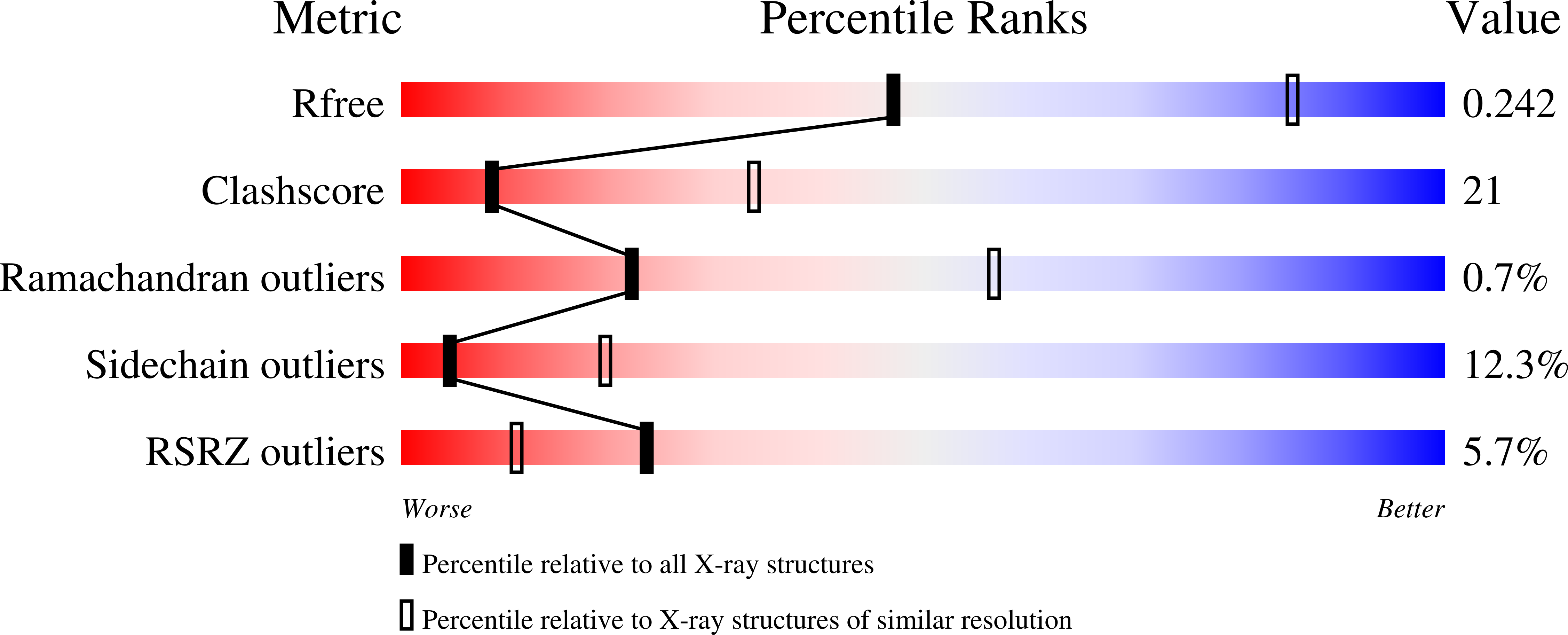Charged Amino Acids (R83, E567, D617, E625, R669, and K678) of CusA Are Required for Metal Ion Transport in the Cus Efflux System.
Su, C.C., Long, F., Lei, H.T., Bolla, J.R., Do, S.V., Rajashankar, K.R., Yu, E.W.(2012) J Mol Biology 422: 429-441
- PubMed: 22683351
- DOI: https://doi.org/10.1016/j.jmb.2012.05.038
- Primary Citation of Related Structures:
3T51, 3T53, 3T56, 4DNT, 4DOP - PubMed Abstract:
Gram-negative bacteria expel various toxic chemicals via tripartite efflux pumps belonging to the resistance-nodulation-cell division superfamily. These pumps span both the inner and outer membranes of the cell. The three components of these tripartite systems are an inner-membrane, substrate-binding transporter (or pump); a periplasmic membrane fusion protein (or adaptor); and an outer-membrane-anchored channel. These three efflux proteins interact in the periplasmic space to form the three-part complexes. We previously presented the crystal structures of both the inner-membrane transporter CusA and membrane fusion protein CusB of the CusCBA tripartite efflux system from Escherichia coli. We also described the co-crystal structure of the CusBA adaptor-transporter, revealing that the trimeric CusA efflux pump assembles with six CusB protein molecules to form the complex CusB(6)-CusA(3). We here report three different conformers of the crystal structures of CusBA-Cu(I), suggesting a mechanism on how Cu(I) binding initiates a sequence of conformational transitions in the transport cycle. Genetic analysis and transport assays indicate that charged residues, in addition to the methionine pairs and clusters, are essential for extruding metal ions out of the cell.
Organizational Affiliation:
Department of Chemistry, Iowa State University, Ames, IA 50011, USA.



















